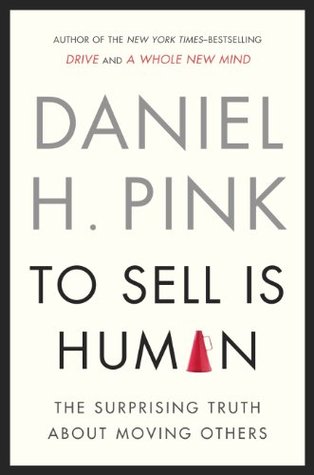More on this book
Community
Kindle Notes & Highlights
Read between
January 12 - February 3, 2020
After someone hears your pitch . . . What do you want them to know? What do you want them to feel? What do you want them to
How do artists get better at their craft? They practice, of course. But they also pay attention.
For example, keep a pitch notebook. With a small notepad or on your smartphone, jot down the great pitches you hear as you’re moving through the world—a shrewd advertising tagline, a mom’s request to her kid, a colleague’s plea for a new assignment.
make you aware
try recording your practice pitches.
Listening to your own voice can be painful, but it’s a smart way to practice—and to spare yourself even more pain in the future.
you can enliven question pitches, one-word pitches, and rhyming pitches by accompanying them with a single photograph or illustration that captures your idea.
One excellent technique on this front is sending short video messages by e-mail, which you can do almost effortlessly, and usually for free, on QuickTime (get the details at: http://www.quicktime.com).
A pecha-kucha presentation contains twenty slides, each of which appears on the screen for twenty seconds.
Go first if you’re the incumbent, last if you’re the challenger.
the middle is the place you’re most likely to get run over.
Granular numbers are more credible than coarse numbers.
Recruit ten people—a combination of coworkers and friends and family. Then ask them which three words come to mind in response to one of these questions: What is my company about? What is my product or service about? What am I about?
Once you gather these words, look for patterns.
Sales and theater have much in common.
Both invite rejection—for
Viola Spolin,
Improvisation for the Theater,
Keith Johnstone,
Impro: Improvisation and the Theatre.
three essential rules of improvisational theater: (1) Hear offers. (2) Say “Yes and.” (3) Make your partner look good.
Listening without some degree of intimacy isn’t really listening.
The “ocean of rejection” that we face every day in sales and non-sales selling delivers plenty of nos to our shores. But we also send many back out with the tide, saying “No” ourselves more often than we realize.
say “Yes and” instead.
Yes and’ isn’t a technique,” Salit says. “It’s a way of life.”
Roger Fisher,
In 1981 he coauthored Getting to Yes, the most influential book ever written about negotiation.
1989, Stephen R. Covey wrote The 7 Habits of Highly Effective People,
the only way to truly influence others is to adopt “a frame of mind and heart that constantly seeks mutual benefit in all human interactions.”
“I’m Curious,”
The questions must be genuine queries, not veiled opinions
The idea here isn’t to win. It’s to learn.
“Never argue,” he wrote. “To win an argument is to lose a sale.”
“In improv, you never try to get someone to do something. That’s coercion, not creativity,”
Epictetus said, “Nature hath given men one tongue but two ears, that we may hear from others twice as much as we speak.”
One of the simplest ways to do that—to reduce your ratio of talking to listening—is simply to slow down.
Designate one day this week to be your slow day.
Are your conversation partners actually finishing their sentences?
Are people getting their perspective fully on the table without your interrupting?
Do they have time to take a breath before you...
This highlight has been truncated due to consecutive passage length restrictions.
begin each sentence with “Yes and,” which forces them to build on the previous idea.
“Those who say ‘Yes’ are rewarded by the adventures they have.
Those who say ‘No’ are rewarded by the safety they attain.”
Play “Word-at-...
This highlight has been truncated due to consecutive passage length restrictions.
The rules are simple. Six to eight people sit in a circle and collectively craft a story. The hitch: Each person can add only one word and only when it’s his turn.
Find a partner. Then choose a controversial issue that has two distinct and opposed sides. Before you begin, have your partner decide her position on the issue. Then you take the opposite stance. She then makes her case, but you can reply only with questions—not with statements, counterarguments, or insults. These questions must also abide by three rules: (1) You cannot ask yes-no questions. (2) Your questions cannot be veiled opinions. (3) Your partner must answer each question.
Impro: Improvisation and the Theatre by Keith Johnstone.
Improvisation for the Theater by Viola Spolin.
Creating Conversations: Improvisation in Everyday Discourse by R. Keith Sawyer.
jazz,


